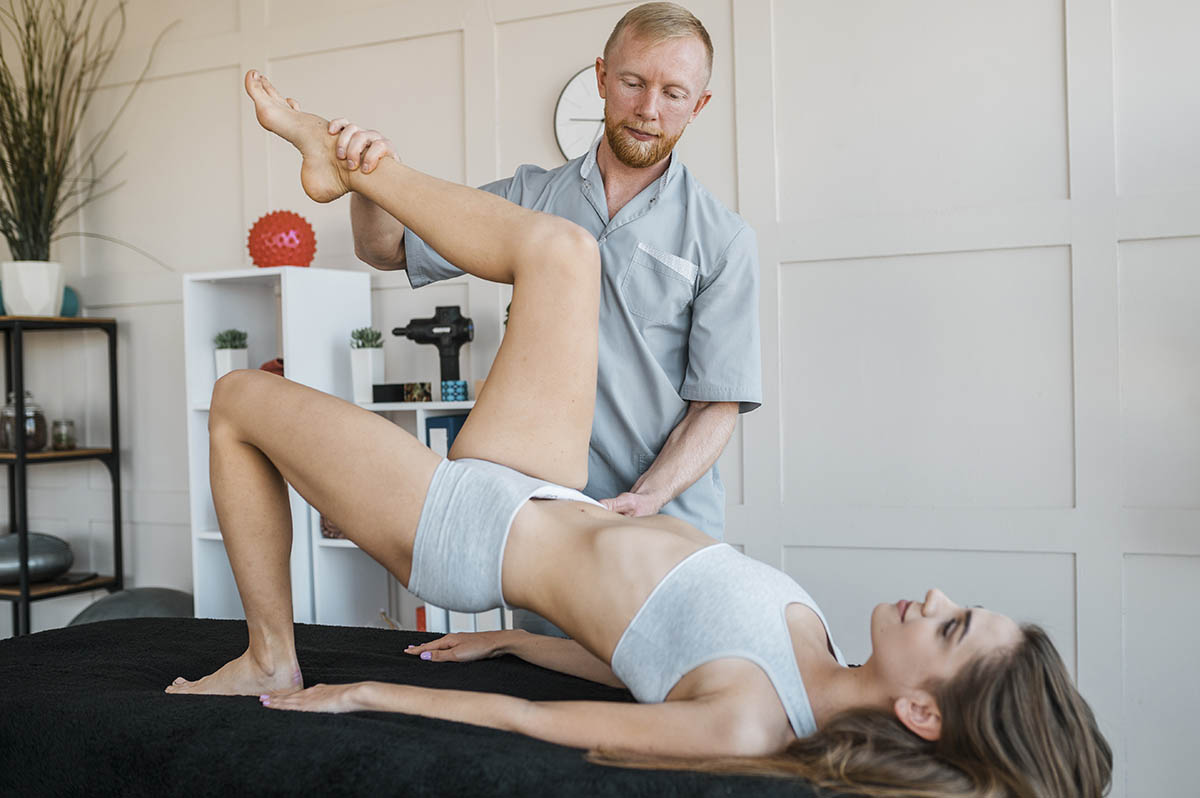Introduction:
Welcome to OrMobility Physical Therapy & Performance, where we specialize in pelvic floor physical therapy designed to address the unique needs of both men and women. In this comprehensive guide, we will explore the intricate anatomy of the male and female pelvic floors and examine their profound relationship with the lumbar spine and sacroiliac joint. Understanding this interconnected system is essential for addressing pelvic floor issues and promoting optimal musculoskeletal health.
Unveiling the Complexity of the Pelvic Floor Anatomy
Female Pelvic Floor Anatomy
Begin by delving into the detailed anatomy of the female pelvic floor. Explore the muscles, ligaments, and connective tissues that make up this complex structure, including the pubococcygeus, iliococcygeus, and puborectalis muscles. Discuss the role of these components in supporting pelvic organs, maintaining continence, and contributing to sexual function.
Male Pelvic Floor Anatomy
Next, shift the focus to the male pelvic floor anatomy. Highlight the similarities and differences compared to the female pelvic floor, emphasizing structures like the pubococcygeus, levator ani, and perineal muscles. Discuss the male pelvic floor’s role in supporting organs, controlling bowel and bladder function, and contributing to sexual health.
The Lumbar Spine-Pelvic Floor Connection
Understanding the relationship between the pelvic floor and the lumbar spine is crucial for comprehensive pelvic health. Explore how the lumbar spine’s stability and mobility influence the pelvic floor, and vice versa.
Lumbar Spine Anatomy
Briefly outline the anatomy of the lumbar spine, emphasizing its role in providing support, stability, and flexibility. Discuss the intervertebral discs, facet joints, and musculature that contribute to lumbar spine function.
Lumbar Spine-Pelvic Floor Interaction
Examine how the lumbar spine and pelvic floor work together as a functional unit. Discuss the impact of lumbar spine dysfunction on pelvic floor muscles, potentially leading to issues such as pelvic pain, incontinence, or sexual dysfunction.
The Sacroiliac Joint-Pelvic Floor Connection

The sacroiliac joint (SI joint) plays a significant role in the stability and mobility of the pelvis. Explore how the SI joint and pelvic floor are interconnected, and dysfunction in one area can affect the other.
Sacroiliac Joint Anatomy
Provide an overview of the sacroiliac joint anatomy, emphasizing its importance in transferring load between the spine and lower extremities. Discuss the ligaments and muscles that stabilize the SI joint.
Sacroiliac Joint-Pelvic Floor Interaction
Examine the dynamic relationship between the SI joint and pelvic floor. Discuss how dysfunction in the SI joint can contribute to pelvic floor issues, such as muscle imbalances, pain, or altered organ support.
Pelvic Floor Dysfunction: Male and Female Perspectives
Now that we have a foundation in pelvic floor anatomy and its connections, let’s explore how dysfunction in the pelvic floor can manifest differently in men and women.
Female Pelvic Floor Dysfunction
Discuss common pelvic floor issues in women, such as urinary incontinence, pelvic organ prolapse, and pelvic pain. Examine how these conditions may be influenced by factors like childbirth, hormonal changes, and musculoskeletal imbalances.
Male Pelvic Floor Dysfunction
Examine pelvic floor issues specific to men, including erectile dysfunction, chronic prostatitis, and pelvic pain. Explore the potential causes, such as muscle tension, nerve entrapment, and the impact of lumbar spine and SI joint dysfunction.
How Pelvic Floor Physical Therapy at OrMobility Addresses these Connections
Transition into how pelvic floor physical therapy at OrMobility Physical Therapy & Performance takes a holistic approach, addressing the intricate connections between the pelvic floor, lumbar spine, and sacroiliac joint.
Comprehensive Assessment
Describe the thorough assessment process at OrMobility, where our skilled physical therapists evaluate the function of the pelvic floor, lumbar spine, and sacroiliac joint to identify any imbalances or dysfunctions.
Individualized Treatment Plans
Highlight the personalized nature of the treatment plans at OrMobility, explaining how targeted exercises, manual therapy, and biofeedback are utilized to address specific issues. Discuss the importance of integrating lumbar spine and SI joint rehabilitation into the pelvic floor treatment.
Collaboration with Other Specialties
Emphasize the collaborative approach at OrMobility, where our team works closely with other healthcare professionals, such as orthopedic specialists or urologists, to ensure comprehensive care for our patients.
Benefits of Addressing Lumbar Spine and Sacroiliac Joint in Pelvic Floor Therapy
Explore the numerous benefits of addressing lumbar spine and sacroiliac joint issues in conjunction with pelvic floor physical therapy.
Improved Pelvic Floor Function
Discuss how resolving lumbar spine and SI joint dysfunction can positively impact pelvic floor function, leading to improved strength, coordination, and overall health.
Enhanced Stability and Mobility
Address how addressing lumbar spine and SI joint issues contributes to enhanced stability and mobility in daily activities, reducing the risk of future musculoskeletal issues.
Prevention of Recurrence
Highlight how a comprehensive approach to pelvic floor therapy at OrMobility helps prevent the recurrence of pelvic floor issues by addressing underlying causes.
Real-Life Success Stories
Share testimonials from individuals who have experienced transformative results through pelvic floor physical therapy at OrMobility Physical Therapy & Performance. Highlight cases where addressing lumbar spine and SI joint issues played a pivotal role in their recovery.
Frequently Asked Questions
Anticipate and answer common questions regarding the interplay between the pelvic floor, lumbar spine, and sacroiliac joint. Address inquiries related to treatment duration, expected outcomes, and the importance of addressing all components of the musculoskeletal system.
Conclusion:
Wrap up the blog post by emphasizing the interconnected nature of the pelvic floor, lumbar spine, and sacroiliac joint. Encourage readers to prioritize their musculoskeletal health by seeking comprehensive pelvic floor physical therapy at OrMobility Physical Therapy & Performance. At OrMobility, we are dedicated to unlocking the connections that lead to optimal pelvic health and overall well-being. Schedule a consultation today and take the first step towards a healthier, more balanced you.


